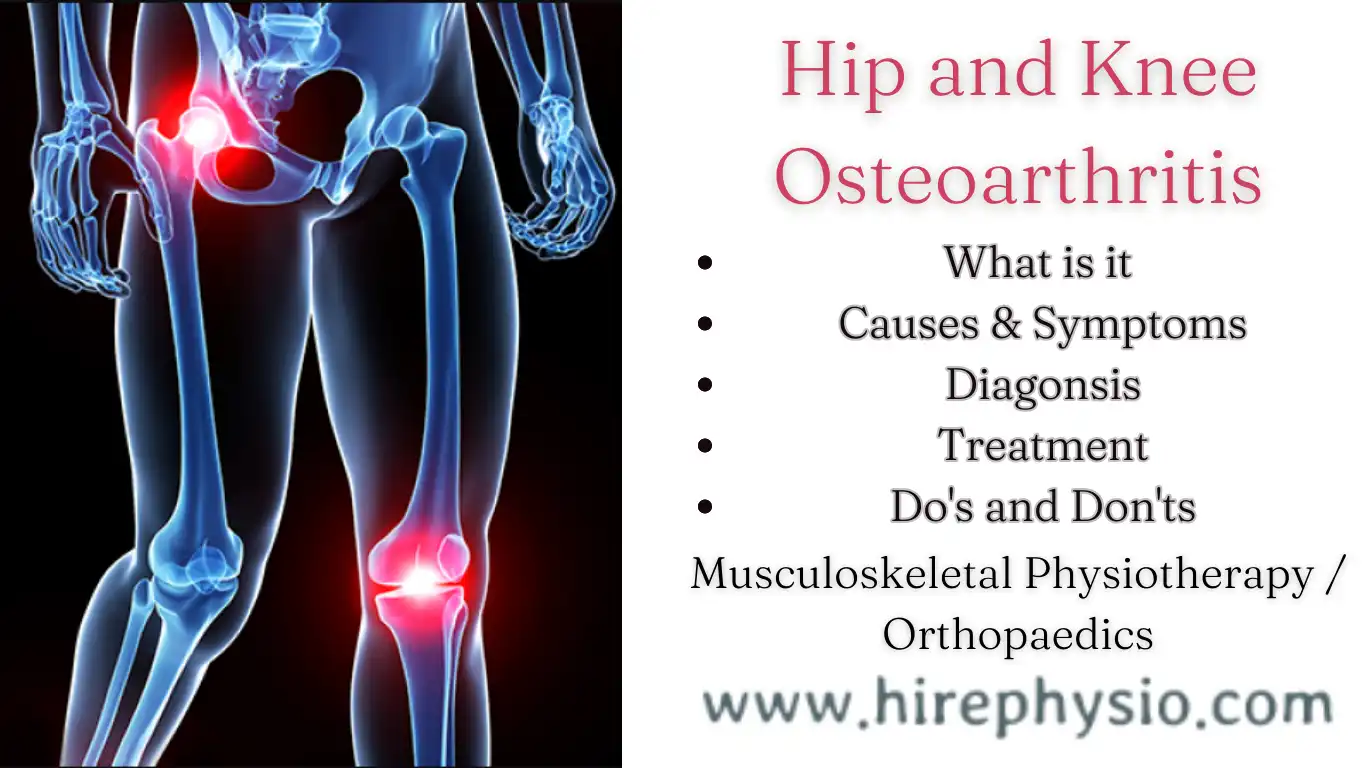Understanding Hip and Knee Osteoarthritis
Hip and knee osteoarthritis (OA) are two common forms of degenerative joint diseases that affect millions of people worldwide. These conditions develop due to the gradual wear and tear of the cartilage, causing pain, stiffness, and limited mobility. While the exact cause of osteoarthritis is still unknown, certain factors like age, genetics, obesity, and joint injuries can increase the risk of developing the disease.
At Hirephysio.com, we understand the impact that hip and knee osteoarthritis can have on your quality of life. That’s why our team of experienced physiotherapists offers specialized treatments to help manage the symptoms of OA, improve joint function, and prevent further damage. Our evidence-based programs include exercises, manual therapy, and education on lifestyle modifications to help you live a pain-free and active life. Contact us today to learn more about how we can help you manage hip and knee osteoarthritis.
What is Hip osteoarthritis?
Hip osteoarthritis affects the hip joint, which is a ball-and-socket joint that connects the pelvis to the femur. This condition can cause pain in the groin, thigh, and buttocks, and may also result in limited hip movement, difficulty walking, and muscle weakness.
What is knee osteoarthritis?
Knee osteoarthritis affects the knee joint, which is a hinge joint that connects the thigh bone to the shin bone. This condition can cause pain in the front, inside, or back of the knee, and may also result in swelling, stiffness, and difficulty bending or straightening the knee.
How Hip and knee osteoarthritis differ from each other ?
Hip and knee osteoarthritis differ from each other in several ways, including:
- Location: Hip osteoarthritis affects the hip joint, while knee osteoarthritis affects the knee joint.
- Symptoms: Hip osteoarthritis typically causes pain in the groin, thigh, and buttocks, while knee osteoarthritis typically causes pain in the front, inside, or back of the knee.
- Joint structure: The hip joint is a ball-and-socket joint, while the knee joint is a hinge joint. This means that the range of motion and movement patterns of these joints differ from each other.
- Treatment options: While physiotherapy can be helpful in managing the symptoms of both conditions, the specific treatment options may differ. For example, exercises that strengthen the hip muscles may be more effective for hip osteoarthritis, while exercises that focus on knee alignment and stability may be more effective for knee osteoarthritis.
Overall, while both hip and knee osteoarthritis are forms of degenerative joint disease that involve the breakdown of joint cartilage, they differ in their location, symptoms, joint structure, and treatment options.
10 Quick Facts About Knee and Hip Osteoarthritis
- Knee and hip osteoarthritis (OA) are common conditions that affect millions of people worldwide.
- Osteoarthritis is a degenerative joint disease that causes the breakdown of cartilage, leading to pain and stiffness in the affected joint.
- Obesity is a major risk factor for developing knee and hip OA, as excess weight puts additional stress on the joints.
- Other risk factors for OA include age, genetics, previous joint injury or surgery, and certain occupations that require repetitive motions.
- Symptoms of knee and hip OA may include pain, stiffness, swelling, and reduced range of motion in the affected joint.
- Non-pharmacological treatments for knee and hip OA include weight loss, exercise, physical therapy, and assistive devices (such as canes or braces).
- Medications such as acetaminophen, nonsteroidal anti-inflammatory drugs (NSAIDs), and corticosteroids can help relieve pain and inflammation associated with OA.
- Joint replacement surgery may be recommended for severe cases of knee or hip OA that do not respond to other treatments.
- There is no cure for knee and hip OA, but with appropriate management, symptoms can often be effectively controlled.
- It is important for individuals with knee and hip OA to work closely with their healthcare providers to develop a personalized treatment plan that meets their specific needs and goals.
- 10 + ways Get Back Fast on Track with Expert Physiotherapy for Musculoskeletal Conditions
- 10 Quick Facts About Knee and Hip Osteoarthritis
- Quick Understanding of Hip Osteoarthritis: Causes, Symptoms, and Treatment | No. 1 Hirephysio.com
- Effective Treatment Options for Knee Osteoarthritis: Managing Pain and Improving Functionality

